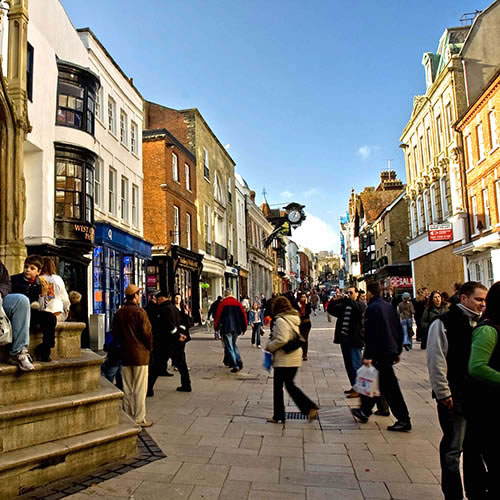Britain’s shop vacancy rates have remained at their lowest levels since January 2010, at 12.5 per cent, according to the Local Data Company (LDC).
The latest figures showed that March also saw a 0.2 per cent drop in vacancy rates since the start of 2016. Leisure vacancy saw a 0.1 per cent change at 8.1 per cent and all retail and leisure vacancy saw no change at 11.3 per cent.
The UK shopping centre vacancy rate dropped 1.5 per cent in March to 13.2 per cent, compared with the same period last year. The North East and Scotland saw the biggest fall in vacancy rates, 2.8 per cent and 2.4 per cent respectively. Wales was the only region to see an increase (2.4 per cent) in vacancy rates in the past 12 months.
Retail park vacancy is currently at six per cent, which has improved across all regions. The North East and West Midlands saw the biggest improvements, down 3.1 per cent and 2.9 per cent respectively in the past year since March 2015.
Retail parks in the South of England saw little change to vacancy rates, which included London (0.4 per cent), the South East (0.4 per cent) and the South West (0.3 per cent).
Town-centre vacancy levels remained unchanged for the third consecutive month at 10.9 per cent. Compared with the same period a year ago, vacancy rates dropped 0.4 per cent from 11.3 per cent.
Both the West Midlands and Yorkshire and Humber saw town centre vacancy decrease by 0.7 per cent – the biggest drop across the UK. Scotland was the only region to see an increase in vacancy, up 0.5 per cent.
Persistent vacancy rates, with units vacant for three years or more, decreased by 0.1 per cent in the first quarter of 2016. The only increase was in those vacant for less than one year (short-term vacancies). The number of short-term vacant units almost doubled from 1,141 in Q4 2015 to 2,108 in Q1 2016 – an 85 per cent increase.
Matthew Hopkinson, director at LDC, said: “March’s data shows an interesting pattern of continuing improvement in the occupation of shopping centres and retail parks, but no improvements in high streets. There are two key areas of note in this data. The first, is that short-term vacant units are remaining vacant for longer. This begs the question of whether optimal occupation levels have been achieved in many locations or not. Should the trend continue, the increased polarisation between locations where shops close and open versus those where shops just close, would grow.
“The polarisation of places is clearly seen at a regional level. This is the second key area to note. The fact that the number of units that have been vacant for more than three years in Wales, the North West, the North East and the West Midlands is double than that of London and the South West.
“Consumer confidence remains fragile and April has seen the arrival of the National Living Wage, which will increase costs significantly for retailers. Only time will tell as to who will have to reduce their number of shops accordingly, by focusing their investment on the healthier locations, while the weaker locations continue to weaken and lose any shopping attractions that they might currently have.”


